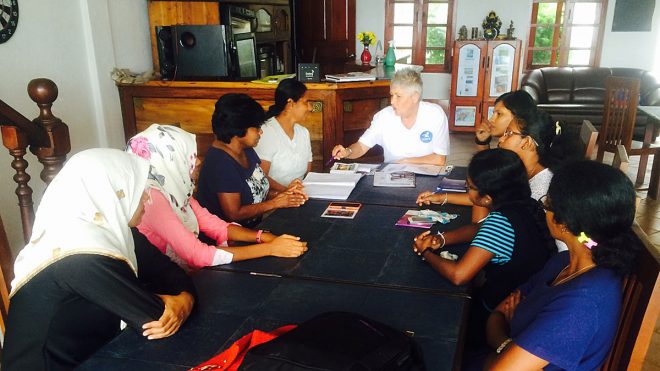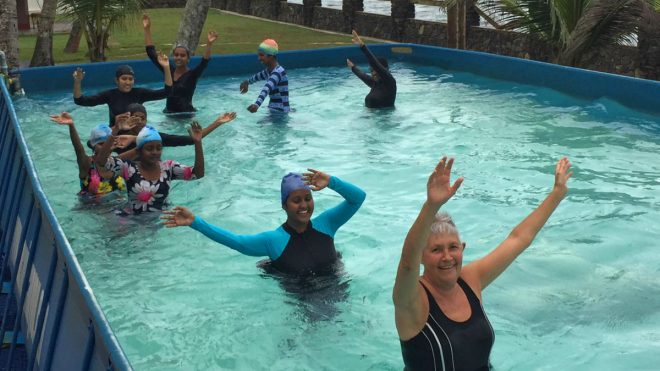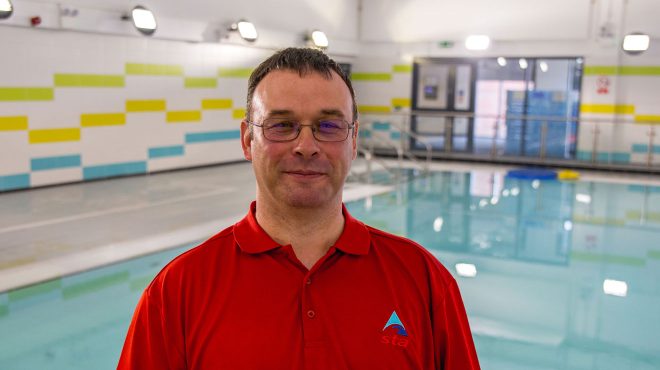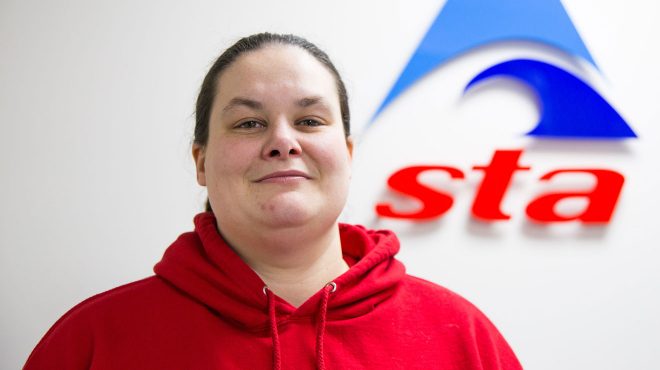Sri Lankan Women’s Project Takes First Steps to Self-Sufficiency
STA continues to support the Sri Lankan Women’s Swimming Project, which was set-up after the 2004 tsunami, where 80% of those who drowned were women and children. The project’s founder Christina Fonfé and husband Mike share their latest developments here as they take their first steps to self-sufficiency.
Our 11th year of post-tsunami operation saw our first in-country Project Manager, Vinila Rathnayake, take up her appointment. The following year, 2016, saw some swim school challenges that we can honestly say no other swim school in the STA could possibly have experienced.
- First, the steel frame of our British High Commission Colombo donated fabric pool finally dissolved away to nothing under the incessant onslaught of salt water spray from our otherwise beautiful beach environment. While we, in the UK, were thinking about shipping out a replacement frame from the manufacturers in China, Vinila’s crew had a look-alike frame welded up and installed by a local plumbing contractor.
- Next, a 50-tonne drowned dead whale washed over our reef and lay as a potential exploder as internal gas pressure built up inside it – this was just a few metres from our beachside wall, a hazard that could not be ignored for very long. We refused to have the local authority bury the whale in our front yard, so they looked elsewhere, cut it in half and buried the large pieces in the garden of the derelict house next door! Termites and worms work fast in the tropics and 90 days later, the only evidence of it ever having been there seems to be a slightly larger than normal crop of whale-fertilised coconuts.
In January, Mike and I went back in-country to give local staff training in administration, recruiting and teacher advancement. With swimming training essentially one-to-one for the very first lesson, and then in small groups thereafter, it has been an uphill struggle to get teachers to maintain records; we hope to have overcome this with the introduction of a Swimming Passport – this records our thirty stages of learning to swim. For example, when a student can jump into deep water, float for ten minutes, swim a hundred metres and climb out over a thirty centimetre ledge, they are declared ‘swimmers’ and the Passport gives them free access to our pool.
If they want to swim in the sea, they need a Visa Extension to the Passport, to include instruction on tides, surf, rips and so on, plus a 400m swim parallel to the beach!

In a country where women and teenage girls have to learn out of sight of men (this is not unique to Muslims; the requirement virtually applies to the entire Asian community of a billion Buddhist, Hindus, Sikhs, Christians and others in the East), training female teachers is a critical path in drowning prevention. We particularly like the STA Student Teacher Certificate because it is such a good formal apprenticeship into the swimming teaching profession. We are delighted that the STA is continuing with the Student Teacher Certificate.

All in all, a good start to the New Year. February will see us report on the activities of our first UK volunteer teacher coming out, regrettably only for a week; it would be nice to have a six-month, no-pay, finance-your-flights tutor-qualified volunteer, but then so would any UK swim school! On the other hand we do offer a unique location, fantastic curries and a virtually 100% adult population of total non-swimmers to develop your skills on.
If you’d like to learn more about the Sri Lankan Women’s Swimming Project and our efforts in drowning prevention in Sri Lanka, please visit our website.



